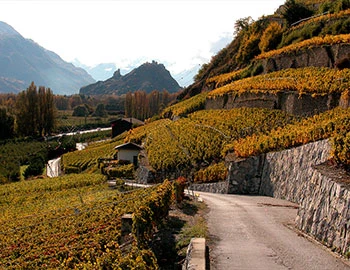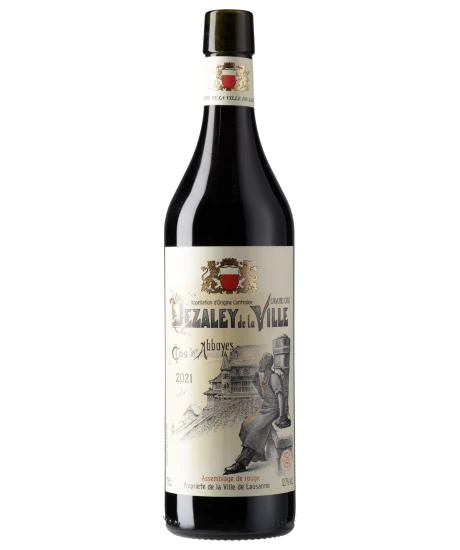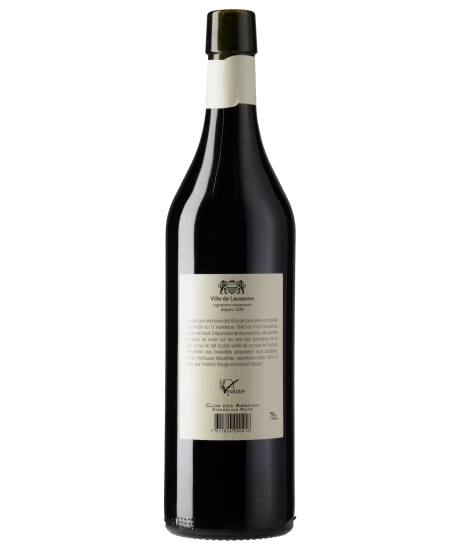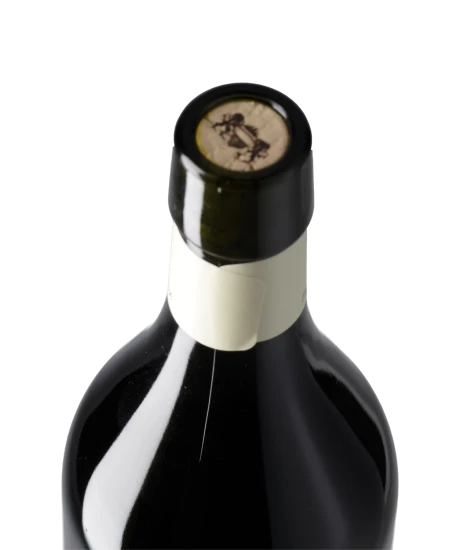Dézaley rouge Clos des Abbayes, Gamme historique 2021
Dézaley rouge Clos des Abbayes, Gamme historique 2021
AOC Waadt, Ville de Lausanne, 750 ml

Attributes
| Grape variety: | Gamay, Merlot, Diolinoir, Syrah, Pinot noir |
| Producer: | Ville de Lausanne |
| Origin: | Switzerland / Waadt / Lavaux |
| Other vintages: | 2023 |
| Ripening potential: | 1 to 4 years |
| Drinking temperature: | 16 to 18 °C |
| Food Pairing: | Cold fish dish, dried meat, Bern meat platter with pickled cabbage, Châteaubriand, Filet Wellington, White cheese |
| Volume: | 12.5 % |
| Note: | Contains sulphites |
Merlot
Everybody’s darling
Merlot is the most charming member of the Bordeaux family. It shines with rich colour, fragrant fullness, velvety tannins and sweet, plummy fruit. It even makes itself easy for the vintner, as it matures without issue in cool years as well. This is in contrast to the stricter Cabernet Sauvignon, which it complements as a blending partner. Its good qualities have made the Merlot famous worldwide. At over 100,000 hectares, it is the most-planted grape in France. It also covers large areas in California, Italy, Australia and recently in Eastern Europe. The only catch is that pure Merlot varieties rarely turn out well. Its charm is often associated with a lack of substance. Only the best specimens improve with maturity. They then develop complex notes of leather and truffles. This succeeds in the top wines from the Bordeaux appellation of Pomerol and those from Ticino, among others.
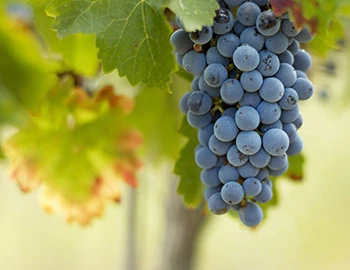
Diolinoir
Unanticipated qualities
Many new varieties are initially underestimated. So it proved with Diolinoir, a cross between Pinot noir and an old French grape by the name of Robin noir. The latter was found in the 1920s in a vine collection in Diolly, in Valais. As it was not known where it had been cultivated, the red immigrants were simply called Rouge de Diolly. When it was crossed in 1970, the name Diolinor came from “Diolly” and “noir”. Not much was expected of these grapes: they were only grown to lend a hand colour-wise to other Swiss varieties. In recent years, however, vintners have discovered that they are capable of much more. When produced in wooden casks, they mature into well-grounded wines with aromas of blackberries and black cherries, as well as solid, round tannins. Definitely try Diolinoir with lamb.
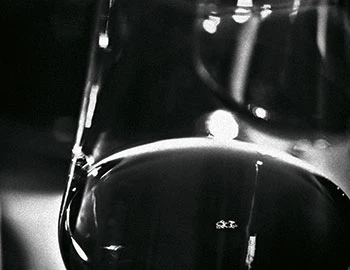
Syrah
A hint of pepper
The legend stubbornly persists that the Syrah variety came from the Persian city of Shiraz. Yet, researchers have shown that it is a natural crossing of two old French varieties: the red Dureza from the Rhône Valley and the white Mondeuse blanche from Savoy. Wines from Syrah are gentle and concentrated. They smell of dark berries, violets and liquorice, and amaze with a piquant touch of white pepper. As varietal wines, they are found on the northern Rhone, as in the Hermitage or Côte Rôtie appellations, as well as in Swiss Valais. In the southern Rhône Valley, Syrah is often wedded with Grenache and Mourvèdre. In 1832, a Frenchman brought the variety to Australia, where it became the emblem of the national wine industry. There, the weightiest versions develop with typical notes of tar and chocolate.
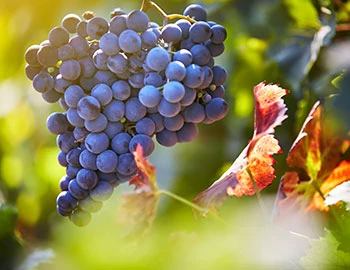
Pinot noir
Blueprint of the terroir
No other variety expresses its terroir as precisely as Pinot noir. It is a sensitive, fragile grape. But when it succeeds, it gives the world some of its very greatest wine plants. It especially excels in Burgundy, where it has been cultivated for at least 700 years. Even in the middle ages, it was considered so precious that it was kept separate from other grapes so as to not diminish its value. The finest examples are delicate and fragrant with aromas of cherries and red berries. With maturity, notes of forest floor, leather and truffles enter as well. An irresistible fruity sweetness still shines through, even after several decades. The Pinot noir does well in cool locations: in Switzerland and in Germany, where it is known as Blauburgunder and Spätburgunder respectively; in Alsace and in South Tyrol, in Oregon, New Zealand and Tasmania. Not least, it yields fantastic champagnes. It is a wonderful culinary companion. With its soft tannins and charming bouquet, it meshes with everything, from Güggeli and cheeses to fried fish.
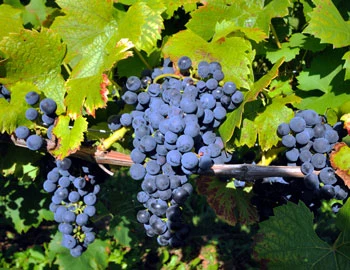
Lavaux
The Lavaux: In the stronghold of Chasselas
The Lavaux comprise 825 of the 3,800 total hectares in Vaud, and form the heart of viticulture in this wine-growing canton. In the sometimes spectacularly steep terraced vineyards, the Chasselas grape demonstrates that it can produce tightly structured crus shaped by the terroir. The wines from the 54-hectare grand cru site, Dézaley, have a legendary reputation. More delicate wines are produced in the western parts of the Lavaux (Lutry and Villette) and the eastern foothills (Montreux).
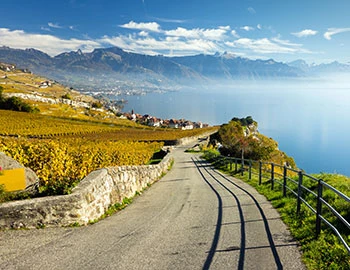
Waadt
Vaud: stronghold of the Chasselas
Vintners of Vaud have almost stubbornly maintained their loyalty to their preferred variety, Chasselas. This is now paying off, as white wines with moderate alcohol content are experiencing a renaissance. And vintners today interpret the lightness of Chasselas in their own individual ways. Over 100 chateaux produce wine here. By contrast, the wine villages fascinate with rural charm. It is these contrasts that make this winegrowing canton an exciting destination for wine tourism.
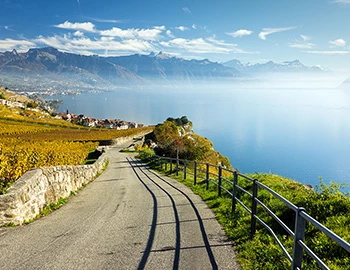
Switzerland
Switzerland – A small country with enormous diversity
Switzerland is famous for its banks, watches, and cheese, but not necessarily for its wine. The Swiss didn't invent wine, but they have been extremely open and curious to it. Wine culture arrived in what is now modern Switzerland via several routes: from Marseilles to Lake Geneva and the Lower Valais region; from the Aosta Valley through the Great St. Bernard Pass to the rest of Valais; from the Rhone through Burgundy, across the Jura Mountains to Lake Constance; and from Lombardy to Ticino, and then on to Grisons.
